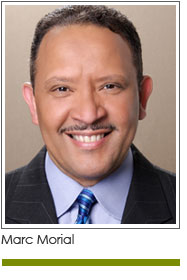 “We have no hope of solving our problems without harnessing the diversity, the energy, and the creativity of all our people.” – Roger Wilkins
“We have no hope of solving our problems without harnessing the diversity, the energy, and the creativity of all our people.” – Roger Wilkins
For Roger Wood Wilkins, the Civil Rights Movement was the family business. When Wilkins was born in 1932 in segregated Kansas City, Missouri, his uncle Roy Wilkins already was a well-known journalist and activist serving as assistant NAACP secretary, and later would serve as executive director. His mother, Helen J. Claytor, was Secretary of Interracial Education for the National YWCA and later would oversee the organization’s integration.
“My uncle lived in a building on Sugar Hill [in New York City],” Wilkins told NPR in 2011. “W.E.B. Du Bois lived there. And Kenneth Clark lived there. And Thurgood Marshall lived there. So when Roy would invite me to dinner, you know, these giants were in the room.”
Wilkins interned for Marshall while a law student at the University of Michigan.
As a newly-minted in 1957, Roger Wilkins was facing a prosperous career in the private sector in New York. But the Little Rock Nine – the first Black students to desegregate an all-white high school in Arkansas after the U.S. Supreme Court’s Brown v. Board of Education decision – changed his plans.
“And so you couldn't say to yourself, well, let those kids do it,” he said. “If you were alive, you had to say, I want to do something. I want to become involved.”
He worked for a few years as welfare caseworker in Cleveland before joining the Kennedy Administration in 1962 as a special assistant to the administrator of the U.S. Agency for International Development. Under President Johnson, he led the newly-created Community Relations Service, which describes itself as the U.S. Justice Department’s "peacemaker for community conflicts and tensions arising from differences of race, color, national origin, gender, gender identity, sexual orientation, religion and disability.”
“The racial upheavals in this country in the '60s came loaded with a heavy history,” Wilkins wrote in 2005 upon the 40th anniversary of the Watts riots. “Many of the participants had lived through it; others had absorbed knowledge carried by their parents and grandparents of the soul-shriveling cruelty of the post-bellum rural South, of the northward migration during World War II when defense jobs opened up, of the physical brutality and guile southerners used to keep their labor force submissive and cheap. They remembered the promised cities full of good jobs, and how many of them just missed out as America passed its industrial peak. Finally, they surely understood the grim and fetid realities of the northern ghettos to which they were consigned.”
At the end of the Johnson Administration, Wilkins accepted a position with the Ford Foundation. There he worked closely with the National Urban League and then-President Whitney M. Young, funding a program Young created called New Thrust, which developed the leadership skills of urban Black youth.
In 1972 he began writing editorials for Washington Post, where he won a Pulitzer Prize for his commentary on Watergate, and spent the rest of his career as a journalist, author and educator.
As is the case for many of our parents and grandparents, Wilkins’ life story is the story of civil rights in the 20th and 21st centuries. Born into Jim Crow, he initially thought Barack Obama had no chance of being elected President. Yet he urged his daughter, Elizabeth, to work on his campaign, telling her, "this is your generation's Selma, and you dare not miss it."
Marc Morial is the president and CEO of the National Urban League.











